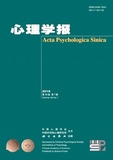Visual representation is one of the most important topics in sensory memory. Traditionally, visual representation with respect to sensory memory was regarded as an ‘icon’, the processing of which would cease after a subsequent stimulus (backward masking). Recently, an increasing number of researches have suggested a more flexible representation of visual sensory memory in which the features of the visual stimulus could be expressed in an abstract form. As previous researchers paid considerable attention to only the schematic features of a visual stimulus, the abstract information contained in a stimulus has rarely been explored. In this study, we have focused on the semantic information of the visual representation of the sensory memory. In a part-report task, the Arabic digits were employed as the target, and the Chinese digits as the semantic-similar mask, which were semantically related to Arabic digits; the noise patterns were employed as the non-semantic mask. If under the Chinese mask condition, the participants’ performance of reporting target digits decreased, it would reveal a conflict between the representations of the target and the mask, thereby suggesting that the visual representation of the sensory memory contains semantic information of the stimulus.
In Experiment 1, the target stimuli were arrays of 3×4 Arabic digits generated by selecting at random from a set containing digits zero to nine. A mask stimuli could either be (a) a single binary visual noise with an element size equal to the stroke width of the target digits, or (b) a 3×4 array of random standard Chinese-digits in capital form whose spatial arrangement is identical to that of the target and its size is big enough to overlap the corresponding target digits. Both the targets and masks were presented within 23.5 ms (2 frames in 85 Hz) and the inter-stimulus interval (ISI) between the offset of the target and the onset of the mask was 105.9 ms (9 frames in 85 Hz). There were three conditions for reporting: part-report with 0 ms cue-delay, part-report with 447 ms cue-delay, and whole-report with no cue-delay. A correct response was recorded only when the participants reported the correct digits at the locations they occurred in the target array. The results showed a significant difference between the noise and standard Chinese-digit mask under all of the three reporting conditions; there was a significant part-report advantage for the noise mask, but not for the Chinese characters. This indicated that semantic information can influence information processing in the sensory memory. Considering that noise and Chinese characters are different at a schematic level, we inverted the Chinese digits in Experiment 2 to destroy their semantic information but reserve their schematic feature.
Therefore, Experiment 2 was identical to Experiment 1, except the Chinese digits were inverted. The results showed that the difference between the noise and inverted Chinese-digit masks still existed, while both showed significant part-report advantages. We conducted an analysis across-experiment afterwards. There was a significant difference between the standard and inverted Chinese-digit masks, while there was no significant difference between the noise masks across the two experiments. Results above revealed that masks with different semantic information but the same schematic information can influence the target processing differently. Considering that the standard and inverted Chinese digits are different in semantic strength, we employed commonly used Chinese characters in Experiment 3 to ensure that the two masks under comparison have different meanings but a similar semantic strength.
In Experiment 3, we employed Chinese digits and commonly used Chinese characters as masks. These two masks had similar word frequencies and number of strokes. However, the Chinese-digit mask still showed a significant stronger masking effect, which revealed the effect of semantic similarity. This implied that the visual representation in sensory memory could contain semantic information.
In conclusion, our findings demonstrate that the feature represented in sensory memory is not only schematic but also semantic. The functions of such a feature-based representation and its interaction with the icon have also been discussed.




